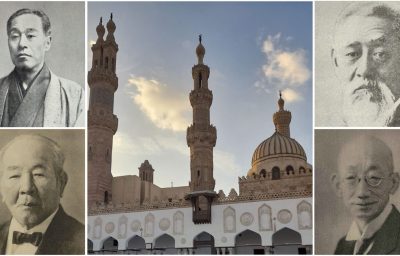COMMUNICATIONS
My Return to the Mount of Scholarship
I took up my post as professor in the Research Division on 1 October 2022. That is a fact, but to me it feels more like a homecoming.
I left home in my early 20s and set foot in Japan for the first time to join SOKENDAI, Nichibunken’s graduate school. My plan was to study the Kyoto-born artist Tomioka Tessai. The rows of splendid houses now around Nichibunken did not exist back then. When getting off the bus at “Katsurazaka senta-mae,”and climbing the hill to Nichibunken, I used to stare up at its monastic edifice in the distance. My Belgian senpai, Bart Gaens, used to refer to Nichibunken as the “scholars’ mount,” and I felt very much like a pilgrim worshipping at a sacred mountain.
I stayed on at Nichibunken for a while after grad school as a research fellow and as JSPS postdoctoral fellowship for research in Japan. I would speak to scholars from many countries, and we would often go out together around Katsura or into Kyoto. A brief chat would be enough to reveal a glimpse of their research fields and their characters, and as we talked I would often forget where it was they had come from. Even now, it is a pleasure of mine to chat in the common room with people I have just bumped into. On such occasions, I might be taking a break from work and looking at the flowers in the common room or the garden outside.
My specialty is the history of artistic connections between Japan and China in the modern age. In recent research, I find myself moved by the exchange between the collector of Chinese calligraphy Lian Quan and the art historian Ōmura Seigai. The two men developed a relationship of deep trust through their shared understanding of Chinese calligraphy. Ōmura worked hard to ensure Lian Quan’s collection was exhibited and sold in Japan; Quan spared no efforts to support Seigai in his research into Chinese art history. All this took place even as relations between Japan and China were deteriorating.
It looks as though my new job will engage me in all manner of international exchange. In truth, I have for a while felt resistance to the expression “international exchange.” This is because it demands an awareness of the borders between countries, which undermine the intensity of intellectual exchange and dilute the thrill of exchanging opinions in the academic arena. I hope to create a space for relaxed exchange, a space where people with different knowledge and cultural backgrounds, but sharing a common interest in Japanese culture, can gather, and begin to talk.

Flowers arranged by visiting research scholar Haijima Agnese. (Photo: Haijima Agnese.)





